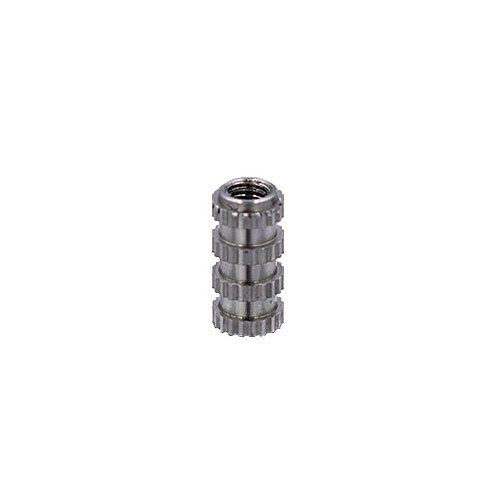
Hex Nuts: Hex nuts, also referred to as hexagon nuts, are a quintessential component in the world of fastener nuts. Characterized by their six flat sides, hex nuts are tightened using a wrench or socket wrench, making them a staple in construction, automotive, and machinery applications. These nuts provide robust and reliable fastening solutions, contributing to the structural integrity of assembled components in various industries.
Lock Nuts: Lock nuts represent another essential category within the realm of fastener nuts. These specialized nuts feature additional mechanisms designed to prevent loosening caused by vibration or torque. Examples include nylon-insert lock nuts, which utilize a nylon ring to create friction when tightened, and prevailing torque lock nuts, equipped with built-in resistance mechanisms. Lock nuts play a crucial role in maintaining the stability and security of fastened connections, particularly in high-stress environments.
Wing Nuts: Wing nuts offer a unique and convenient fastening solution, featuring two flat "wings" that protrude from the nut body. These distinctive wings allow for hand-tightening without the need for tools, making wing nuts ideal for applications requiring frequent assembly and disassembly. Commonly utilized in furniture and lighting fixtures, wing nuts exemplify the versatility and ease of use associated with fastener nuts in various settings.
Cap Nuts: Cap nuts, also known as acorn nuts, represent a specialized category of fastener nuts distinguished by their domed cap design. This domed cap covers the end of the bolt or screw, providing a polished and finished appearance while offering added safety by concealing exposed threads. Cap nuts are favored for their aesthetic appeal and protective functionality, making them a popular choice for a wide range of applications, including architectural and decorative projects.
T-Nuts: T-nuts, alternatively referred to as tee nuts, feature a distinctive T-shaped body that facilitates easy installation into pre-drilled slots or channels. This unique design allows T-nuts to be securely embedded within materials such as wood or metal, providing a reliable anchoring point for fasteners. Widely employed in furniture assembly, cabinetry, and woodworking applications, T-nuts exemplify the adaptability and versatility of fastener nuts in diverse industrial and DIY settings.
By exploring the various types of fastener nuts, including hex nuts, lock nuts, wing nuts, cap nuts, and T-nuts, it becomes evident that these components play a pivotal role in countless applications across industries. Whether ensuring structural integrity, preventing loosening, or enabling quick and convenient assembly, fastener nuts remain indispensable elements in the world of mechanical fastening.
